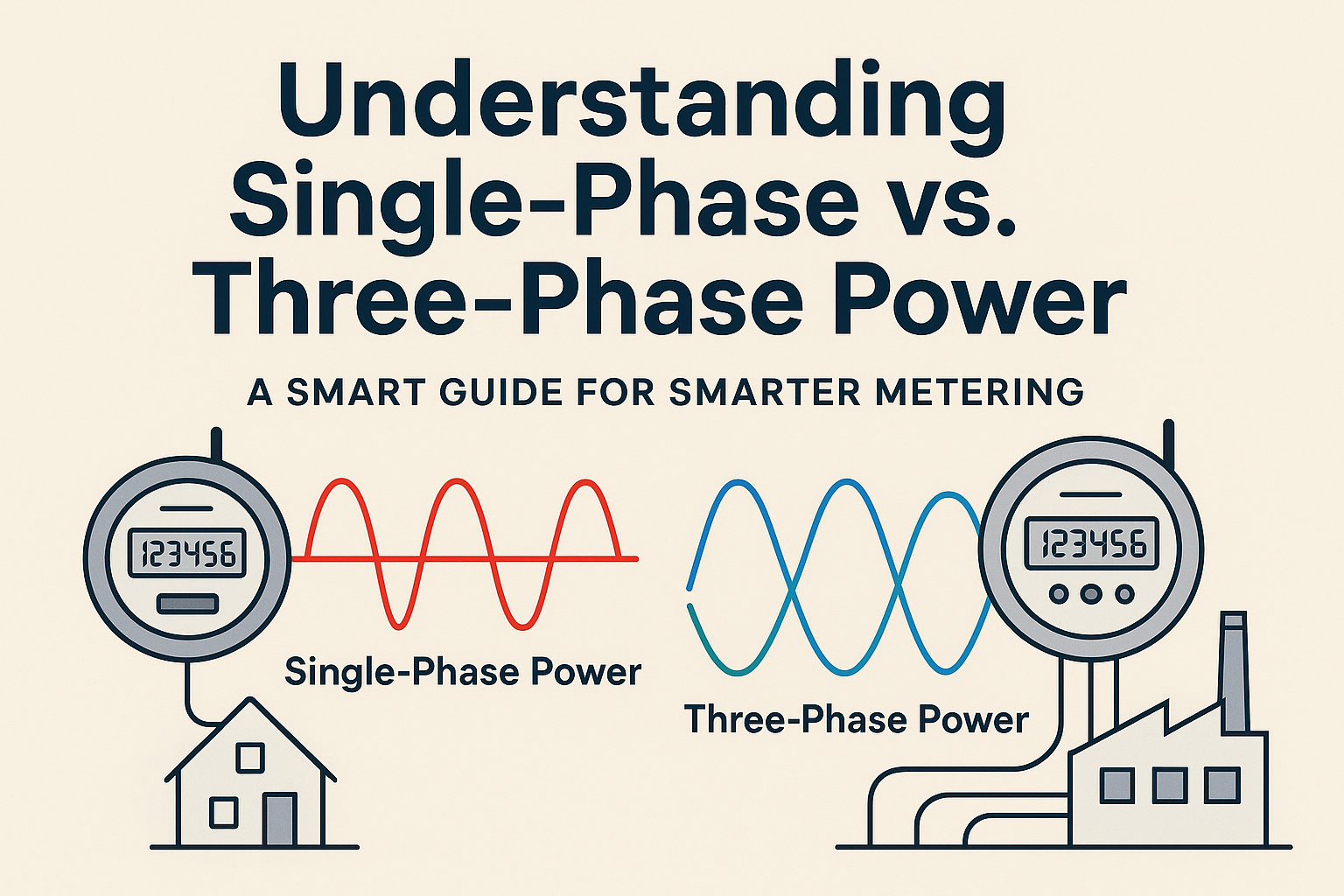Understanding Single-Phase vs. Three-Phase Power: A Smart Guide for Smarter Metering
At Nwaresoft, we believe that innovation starts with awareness. When it comes to managing energy effectively — whether in homes, businesses, or industrial settings — understanding the type of electrical power supply is key.
In this article, we’ll break down the difference between single-phase and three-phase power, explore their applications, and highlight the importance of smart metering solutions to ensure efficiency, accuracy, and future readiness.
What is Single-Phase Power?
Single-phase power uses two wires – one live (hot) and one neutral – and is most commonly used in residential settings.
Features:
- Voltage: Generally 120V or 230V, depending on region.
- Waveform: One AC sine wave, resulting in small drops in power delivery during the cycle.
- Applications: Household electronics, small appliances, lighting, and heating systems.
- Pros: Simple installation, low cost, and ideal for light loads.
- Cons: Less stable under heavy load, not ideal for larger motors or commercial equipment.
What is Three-Phase Power?
Three-phase power uses three separate AC waveforms, each offset by 120 degrees, delivering continuous and balanced energy flow.
Features:
- Voltage: Typically 400V to 480V line-to-line.
- Applications: Factories, commercial spaces, heavy machinery, data centers.
- Efficiency: Smooth power delivery means less vibration, longer equipment life, and greater operational efficiency.
- Scalability: Perfect for growing operations and future expansion.
Why Accurate Metering Matters?
Whether single-phase or three-phase, smart metering is vital to optimize usage, reduce waste, and ensure reliability.
Benefits of Smart Metering:
- Fair Billing: Real-time tracking ensures accurate consumption-based charges.
- Phase Imbalance Alerts: Detects load issues before they damage equipment.
- Preventive Maintenance: Identify unusual activity, surges, or voltage drops early.
- Energy Optimization: Helps users reduce peak loads and manage energy more strategically.
- Compliance Support: Supports auditing and sustainability reporting with precise data.
Final Thoughts from Nwaresoft
Your power architecture matters. Whether you’re running a small household or managing an industrial site, knowing when to deploy single-phase or three-phase power — and how to monitor it — is critical.
Smart metering is not just a tool — it’s a strategy. With the right meters, analytics, and visibility, you can cut costs, improve uptime, and future-proof your electrical infrastructure.
Want to learn how Nwaresoft’s smart IoT solutions can transform your energy efficiency? Contact us or explore our range of smart metering systems designed for both residential and industrial applications.

